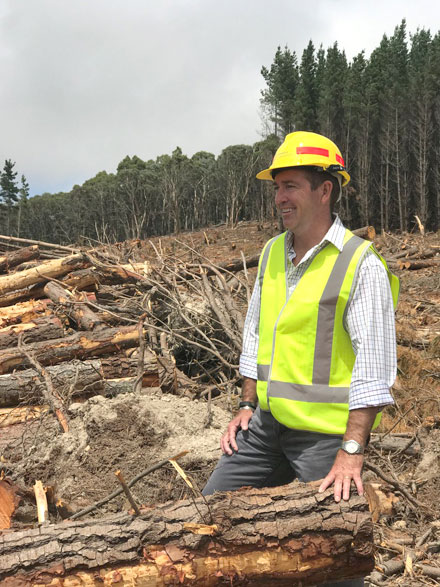A motion to turn the Murray Valley National Park back into a state forest received unanimous support at The Nationals Party conference in Griffith this month. Source: Shepparton News
The motion to convert the National Park back to the ‘‘Murray Valley State Forest so that sustainable and viable practice can be practiced as it was until 2010’’ was put to the conference by Deniliquin The Nationals president and timber industry worker Russell Douglas.
Speaking in favour of Mr Douglas’ proposal were Parliamentary Secretary for Natural Resources and Regional Planning Rick Colless and former NSW minister for Primary Industries Katrina Hodgkinson.
Joan Douglas, who is secretary of the Deniliquin branch, said all 110 delegates voted for the motion.
She said a similar motion which could be applied to timber areas state-wide would now be presented to policy makers to take to the state conference in Broken Hill.
“We have a Primary Industry and Energy meeting in Sydney on Friday, and we will put forward a proposal that this motion go to the policy committee,” she said.
“This would cover not just red gums, but all forestry across the state.
“On the north coast of NSW there is a proposal from the NSW Greens to turn 40,000 hectares of working forests into a koala habitat.
“There doesn’t seem to be any reason why there cannot be sustainable logging practices in forestry areas, except to placate the Green vote in the city centres.”
In presenting his motion to the conference, Mr Douglas highlighted that the conversion of the former Moira and Millewa State Forests into the Murray Valley National Park was costing the regional economy $158 million in earnings each year.
Mr Colless, who is chair of the NSW Forest Industries Taskforce, said this motion is evidence the NSW Government’s plans for the Murray Valley National Park and others are not living up to expectation.
“I do not think the environmental outcomes (of the conversion) are being met,” Mr Colless said. “Then we have the thinning trial designed to look at these environmental outcomes. it shows thinning is having a positive effect, instead of having to thin 400 hectares, they’ll need to thin 140,000 hectares.
“The government cannot afford to do that, so we would need to look to the commercial industry.
“This (national parks conversion) was delivered by ideology, and that is the ideology the environment without any real acknowledgement of the social and economic impacts.”
When asked if he thought the promised tourism benefit of the national parks had replaced timber earning as promised in 2010, Mr Colless said firmly, “no, not at all”.
Mr Colless said while he believes it will be difficult for the national parks decision to be reversed in its entirety, he said this new push and motion should be enough to show the government that something needs to change.
“It does identify the need for a change in the way lands are managed. I think we need a better model for management whether it is for national parks, forests, farms or even our backyards.
“All lands need to be looked after, and it’s becoming more apparent the national parks are not being looked after.”






